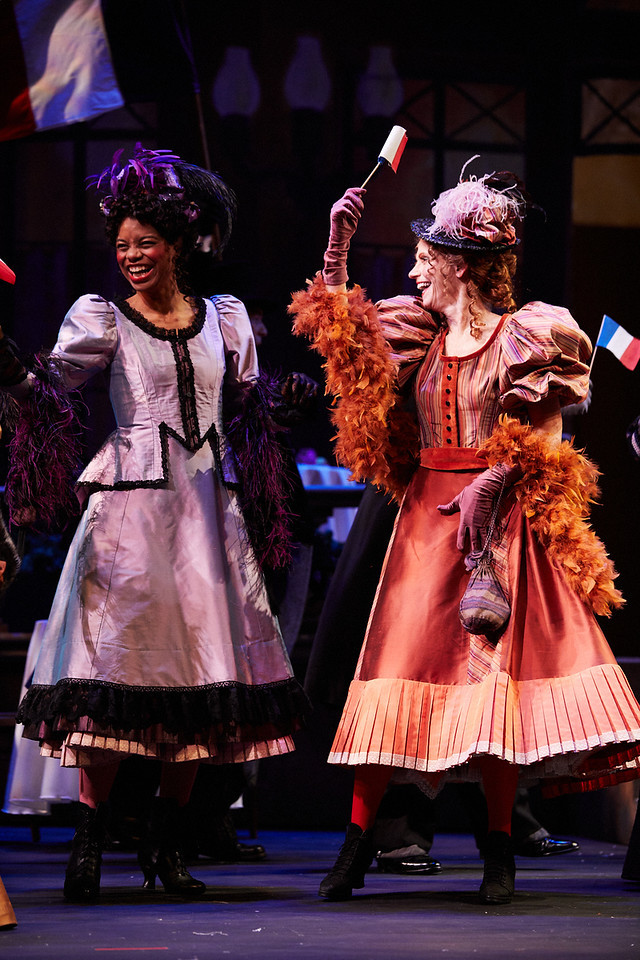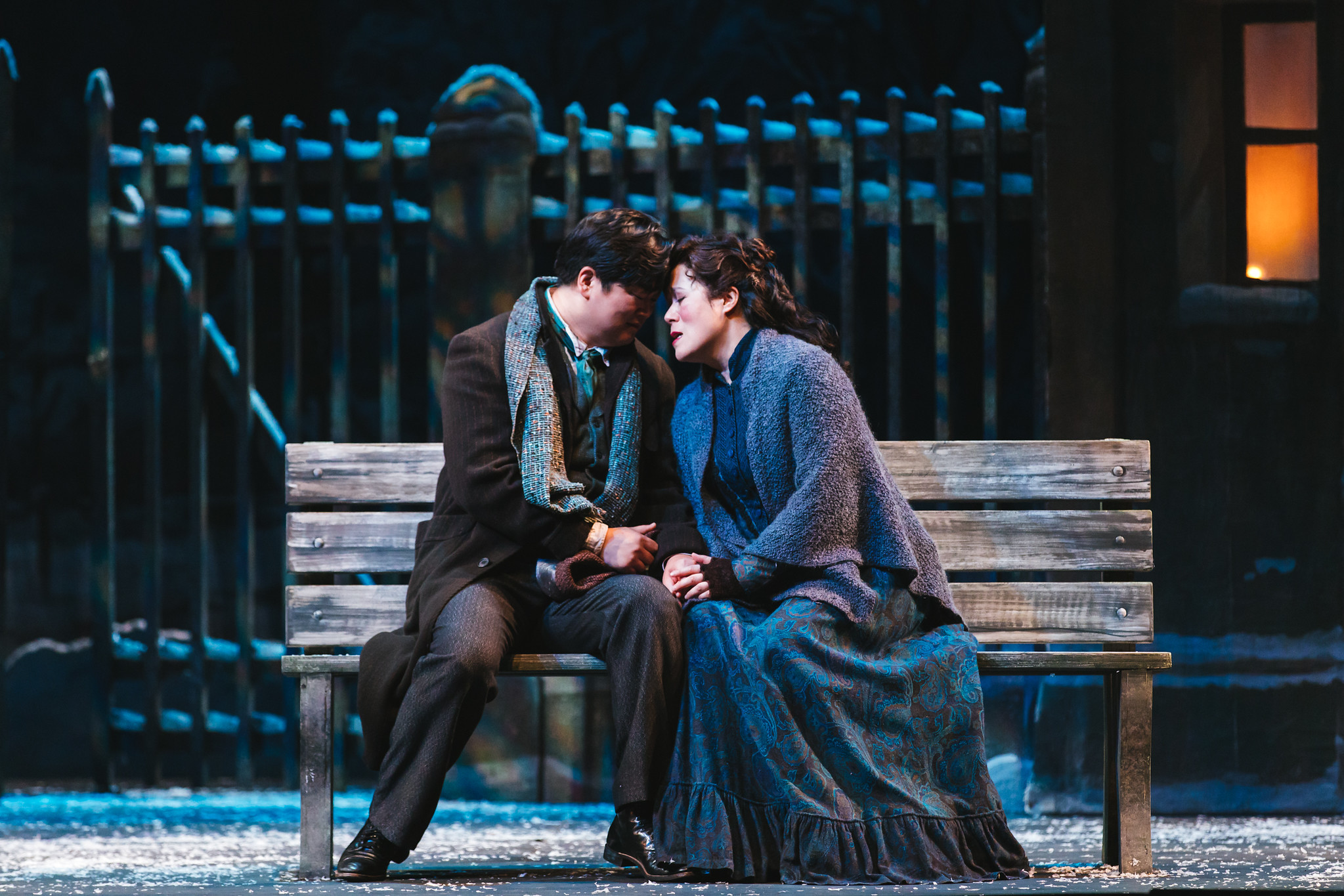La Bohème Lights up McCaw Hall After 18 Months of Darkness
Review of La Bohème at the Seattle Opera
Written by Teen Writer Adrian Martin and edited by Teen Editor Disha Cattamanchi

McCaw Hall opened its doors for a Seattle Opera performance for the first time since the pandemic. La Bohème, a hundred year old story of love, loss, and illness, was made especially potent as the first show at McCaw Hall in 18 months.
La Bohème follows young Parisian artists Rodolfo and Marcello as they fall in and out of love. Rodolfo meets sweet-girl-next-door Mimi, and their love—as well as their subsequent tragedy—become the heart of the show. Musetta, a friend of Mimi’s, carries a more comedic, on-again-off-again romance with Marcello. The underlying fear of disease and how it interacts with the characters economic status as artists is a tragically age old story. It’s a story that felt heartachingly familiar in the midst of the pandemic. Similar to these four characters, there were many artists putting their bodies on the line in this last year, making La Bohème a thoughtful and timely choice from the Seattle Opera.
The opera is entirely in Italian, but never fear; there were English subtitles above the stage. The jokes kept their timing while the writing came across, and did not distract from the arias at all.

With the electronic subtitles, the ornate theater, and the modest set, the opera house felt like an artistic contradiction. For a show about the trials of being young and poor, the audience was anything but. My discomfort around being the only person under 50—purple hair in a sea of white—soon faded as I got swept up in the atmosphere and set.
Almost entirely made of painted tarp, the set was simple, detailed, and absolutely stunning. The first scene is the main artist’s apartment. The peeling wall paper was greyed with grime. Marcello’s art supplies cluttered the corners. It felt like a home, if a dirty one. The other sets included a colorful cafe bursting with music, and a lonely snowy courtyard. It made the opera joyful, heart wrenching, and immersive.
The lighting also aided the ambiance. The windows streaked with daylight in the first act when the artists were falling in love. The snow drifted down in the third act when Mimi and Rodolfo realize the tragedy of their situation. The sun set subtly in the final act where Mimi (spoiler alert) tragically dies. The lighting designer Chad R. Jung made such gorgeous work for his debut, it was almost enough to distract me from the horrifically boring costumes.
At times it felt like the Dickensian costuming strayed away from the integral themes of poverty. The show opened with our starving artists in pristine suits, bemoaning their circumstances. To show things have gotten truly dire, the final act has characters ditch the stylish suit jackets to show—gasp—equally nice button downs. This choice was not only lazy, and uninteresting, but it did nothing to aid the emotional stakes. How are we supposed to believe these artists are too poor to pay a check at a restaurant when they’re wandering around in their well pressed suits?
What the costumes couldn’t convey in terms of stakes, the music delivered. The music was bone shaking, with a commanding orchestra and beautiful operatic voices that shook with passion. It’s hard to believe two people can fall in love in ten minutes, but Rodolfo (Kang Wang) and Mimi (Keri Alkema) brought their characters to life with their powerful voices and adorable chemistry. Alkema portrayed Mimi as shy and sweet even while belting. Musetta’s waltz—where Musetta (Brandie Sutton) boasts how everyone loves her—was hilarious and sharp. Sutton’s vocals were as flashy and charming as the character.

It seemed at times that director David Gately was trying to hide his talented cast, given the nuisance that was the staging of this show. The staging was nonsensical, with actors often facing away from the audience in big moments. For almost a full act, loved ones are gathered around Mimi’s bed as she dies in classic opera fashion. Roldolfo has his back to us almost the entire time. Not only is this a bad directing choice, it was incredibly frustrating to watch. It undercut the severity of the climax by closing the audience off from the character we’re supposed to sympathize with.
By the end of the show, the bland costuming and irritating staging couldn’t distract me enough to prevent tears at Mimi’s death. Watching loved ones gather around her, I was reminded of all the times I watched the artists of the Seattle theater community come together over Zoom to create art and provide support. I’m not the typical vision of an opera goer, but I found something to relate to in the artists’ friendship, love, and grief. In the end, if you are able to sit through two and a half hours of an Italian opera, La Bohème is a tragic spectacle worth seeing.
Seattle Opera's La Bohème ran through October 2021. For more information see here.
Lead photo credit: Philip Newton
The TeenTix Newsroom is a group of teen writers led by the Teen Editorial Staff. For each review, Newsroom writers work individually with a teen editor to polish their writing for publication. The Teen Editorial Staff is made up of 6 teens who curate the review portion of the TeenTix blog. More information about the Teen Editorial Staff can be found HERE.
The TeenTix Press Corps promotes critical thinking, communication, and information literacy through criticism and journalism practice for teens. For more information about the Press Corps program see HERE.

